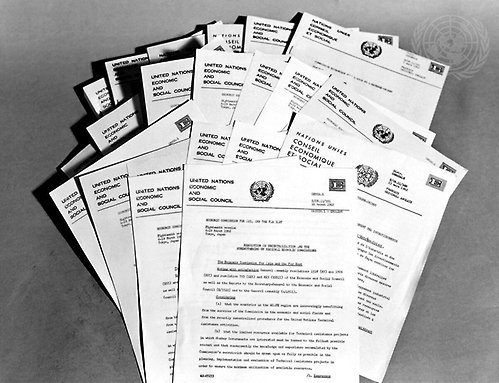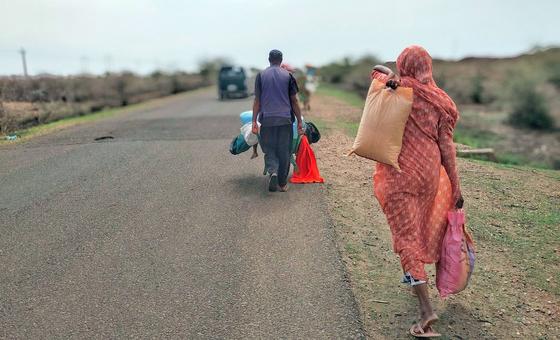“Today, as we pause to acknowledge the complexities and challenges of autism, the United Nations shines a spotlight on a pressing issue that affects millions of lives worldwide: equity and inclusion for individuals on the autism spectrum. As Secretary-General António Guterres calls for greater recognition and acceptance, we’re reminded that autism awareness is not just a feel-good campaign, but a call to action that demands we rethink our societal norms and break down the barriers that hinder individuals with autism from reaching their full potential. As we mark Autism Awareness Day, we’re reminded of the urgent need for compassion, understanding, and a willingness to challenge the status quo. In this article, we’ll explore the UN’s message and what it means for individuals, families, and communities impacted by autism.”
Understanding Autism and Autistic Spectrum Disorder
Characteristics and Diagnosis

Autism Spectrum Disorder (ASD) is a neurodevelopmental disorder characterized by significant social, communication, and behavioral challenges. Early signs and symptoms of ASD often include difficulty with social interaction, repetitive behaviors, and challenges with communication. Children with ASD may also exhibit hypersensitivity or hyposensitivity to sensory experiences, which can affect their ability to interact with their environment.
Common misconceptions about ASD include the belief that it is caused by vaccines, a myth that has been thoroughly debunked by the World Health Organization. Despite clear evidence, misinformation persists, complicating early diagnosis and appropriate intervention. Misdiagnosis can also occur, as ASD symptoms can overlap with other developmental disorders. Early diagnosis, however, is critical for initiating effective interventions that can improve outcomes and quality of life for individuals with ASD.

Global Prevalence and Impact
According to the Centers for Disease Control and Prevention (CDC), approximately 1 in 54 children in the United States is diagnosed with ASD. Globally, the prevalence is estimated to be around 1 in 100 children. The impact of ASD extends beyond the individual to families and society, with families often bearing the brunt of financial and emotional burdens. The economic impact is significant, with costs associated with healthcare, special education, and long-term care varying widely depending on the severity of the disorder.
Impact on society includes the broader implications of integrating individuals with ASD into the workforce and educational settings. Despite the challenges, ASD individuals can contribute significantly to society, offering unique perspectives and innovative solutions to complex problems. However, this can only be realized through inclusive practices and policies that support their full participation in society.
Guterres’ Call for Equality and Inclusion
Addressing Discrimination and Stigma

Discrimination and stigma against individuals with ASD are significant barriers to their full participation in society. The UN Secretary-General, António Guterres, has called for increased efforts to combat these issues. Education and awareness are key components of this strategy, involving community education programs and public campaigns that highlight the abilities and contributions of individuals with ASD. These efforts aim to change societal perceptions and reduce the stigma associated with ASD.
Legal rights and protections for individuals with ASD are another critical area. Many countries have enacted legislation aimed at protecting the rights of individuals with disabilities, including those with ASD. These laws often cover areas such as education, employment, and access to public services. Ensuring that these rights are upheld and that individuals with ASD have access to legal representation is an ongoing challenge that requires the collaboration of legal, educational, and healthcare sectors.

Promoting Equal Opportunities
Creating an environment that promotes equal opportunities for individuals with ASD involves multiple facets, including healthcare and education systems, work environments, and urban planning. Inclusive healthcare and education systems are designed to accommodate the diverse needs of individuals with ASD, ensuring they receive the necessary support to thrive. This includes specialized educational programs, adapted learning environments, and access to mental health services.
Employment and social participation are also areas where individuals with ASD can make significant contributions. Inclusive workplace policies and efforts to create accessible and supportive work environments can facilitate job opportunities for those with ASD. Social participation through community activities and support groups helps integrate individuals with ASD into the broader community, fostering a sense of belonging and reducing feelings of isolation.
Advancing Neurodiversity and SDGs
Intersection of Neurodiversity and SDGs

The intersection of neurodiversity and the UN Sustainable Development Goals (SDGs) highlights the importance of creating environments where individuals with ASD can thrive. The SDGs, designed to address global challenges such as poverty, inequality, and environmental degradation, also include goals that directly impact the lives of individuals with disabilities. Goal 4 (Quality Education), Goal 8 (Decent Work and Economic Growth), and Goal 10 (Reduced Inequalities) are particularly relevant, emphasizing the need for inclusive practices and policies that support individuals with ASD.
Neurodiversity, the concept that there is a natural variation in the human brain, supports the SDGs by advocating for the recognition of differences as strengths. Inclusive policies and practices that support individuals with ASD can drive positive change and contribute to achieving the SDGs. For example, fostering an inclusive educational environment ensures that individuals with ASD have access to quality education, while inclusive workplace practices can enhance economic growth and reduce inequalities.

Case Studies and Success Stories
Several countries have implemented successful initiatives that promote the inclusion of individuals with ASD. In the United States, the Autism Speaks organization provides resources and support for families and individuals with ASD, advocating for policy changes and research funding. The UK’s National Autistic Society has also been at the forefront of promoting awareness and advocacy, working to improve the lives of individuals with ASD through advocacy, research, and support.
Impactful SDG initiatives include the United Nations Education, Scientific, and Cultural Organization (UNESCO)’s efforts to incorporate inclusive education policies that support students with ASD. These initiatives aim to ensure that educational systems are equipped to provide the necessary resources and support to students with ASD, thus promoting their full participation and success in educational settings.
Debunking Myths and Promoting Accurate Information
Debunking myths surrounding ASD is essential for promoting accurate information and understanding. Misconceptions such as the belief that ASD is caused by vaccines or that individuals with ASD cannot function in society are harmful and inaccurate. Promoting accurate information involves educating the public on the complexities of ASD, the importance of early intervention, and the diverse range of abilities within the autism spectrum.
Efforts to promote accurate information often include public awareness campaigns, educational materials, and partnerships with healthcare professionals. Organizations like the Autism Society and the World Health Organization (WHO) play a significant role in disseminating accurate information and combating misinformation. By fostering a more informed public, these efforts can lead to greater understanding and acceptance of individuals with ASD.
Vaccination and Autism
Scientific Evidence and Misinformation: As we observe World Autism Awareness Day, it is imperative to address the persistent myth that vaccines cause autism. The World Health Organization (WHO) and numerous scientific studies have concluded that there is no evidence supporting this claim. Despite overwhelming evidence, misinformation continues to circulate, leading to significant public health concerns. The WHO fact sheet states that extensive research has debunked any link between the measles, mumps, and rubella (MMR) vaccine and autism. This is a critical issue as misinformation can lead to vaccine hesitancy, which in turn can result in outbreaks of preventable diseases.
Impact of Misinformation on Public Health: Misinformation about vaccines has adverse effects on public health. When parents opt out of vaccinating their children due to unfounded fears, it can create public health crises. In 2018, the United States experienced the largest measles outbreak in decades, partly due to low vaccination rates. The impact of such misinformation extends beyond individual health, affecting community immunity and the overall health security of populations. Public health campaigns must include robust educational efforts to counteract these myths and reinforce the safety and necessity of vaccines.
Societal Attitudes and Misconceptions
Common Myths and How They Persist: Misconceptions about autism continue to shape societal attitudes, often leading to stigmatization and marginalization of those with autism. Common myths include the belief that autism is caused by poor parenting or that all autistic individuals have extraordinary talents or abilities. These myths persist due to a lack of comprehensive education and understanding. Media portrayals that sensationalize aspects of autism or the “savant” model contribute to these misconceptions, reinforcing stereotypes and misunderstanding.
Educational Campaigns to Promote Understanding: To address these misconceptions, educational campaigns must be tailored to promote a nuanced understanding of autism. These campaigns should highlight the diversity within the autism spectrum, emphasizing that each individual has unique needs and strengths. Educational initiatives should involve partnerships between schools, healthcare providers, and community organizations to foster inclusive environments that support the well-being of all individuals, including those with autism. Public awareness campaigns, workshops, and community events can play a significant role in breaking down barriers and fostering a more inclusive society.
Personal Stories and Voices of the Autistic Community
Real-Life Experiences
Challenges Faced and Overcome: Personal stories from the autistic community provide invaluable insights into the challenges faced and the strategies used to overcome them. Many individuals with autism describe feeling isolated and misunderstood due to societal misconceptions. However, with the support of loved ones, access to appropriate resources, and a nurturing environment, many have been able to thrive. For instance, the story of Temple Grandin, a renowned animal scientist with autism, exemplifies how individuals with autism can achieve significant professional success and contribute greatly to their fields.
Personal Narratives of Success: Highlighting personal narratives of success helps to counteract negative stereotypes and encourages a more inclusive societal attitude. Stories of individuals who have not only navigated the challenges of autism but have also achieved remarkable success in various fields demonstrate the capability and potential of the autistic community. Such narratives can be shared through media, social platforms, and educational programs to inspire and educate.
Inclusion and Empowerment
Advocacy and Community Support: Advocacy plays a crucial role in empowering individuals with autism and fostering their inclusion in society. Advocacy efforts should focus on ensuring that the voices of those with autism are heard and taken into consideration in policy-making and community planning. Organizations such as the Autism Society and Autism Speaks are leading the charge in advocacy, working to improve access to services, support, and opportunities for people with autism.
Strengthening Voices in Decision-Making: To further empower the autistic community, there needs to be a concerted effort to include individuals with autism in decision-making processes. This includes involving them in the development of policies, programs, and services that directly impact their lives. Providing platforms for self-advocacy and ensuring representation in key forums can help ensure that the needs and perspectives of the autism community are accurately represented and addressed.
Practical Steps Toward a More Inclusive Society
Policy Recommendations
Legislative Changes and Public Policies: Legislative changes are vital to create a more inclusive society for individuals with autism. Policies should aim to provide equitable access to healthcare, education, and employment opportunities. For example, the United States’ Individuals with Disabilities Education Act (IDEA) mandates that all children with disabilities, including autism, have access to free and appropriate public education. Similarly, the Americans with Disabilities Act (ADA) mandates that employers accommodate individuals with disabilities, ensuring they have equal access to employment opportunities.
International Collaborations: International collaboration is essential to address the global challenges faced by individuals with autism. Global agreements like the Convention on the Rights of Persons with Disabilities (CRPD) can serve as a framework for countries to develop and implement inclusive policies. Collaboration between nations in sharing best practices, research, and resources can help to advance the rights and opportunities for individuals with autism worldwide.
Community and Individual Actions
Ways to Support Autistic Individuals: Supporting autistic individuals involves creating environments that are inclusive and accommodating. This can be achieved through the provision of special education services, access to therapy and support groups, and fostering inclusive work environments. Community organizations can play a pivotal role by offering support services and fostering a culture of acceptance and understanding.
Role of Technology and Innovation in Inclusion: Technology and innovation can significantly enhance the inclusion of individuals with autism. Assistive technologies, such as communication aids and educational software tailored to the needs of autistic individuals, can help facilitate learning and social interaction. Innovations such as virtual reality and AI-driven adaptive learning systems offer new opportunities to support individuals with autism in educational and social settings, making inclusion more accessible.
Conclusion and Call to Action
Recommitment to Equality: On World Autism Awareness Day, we must recommit to creating a society where no person with autism is left behind. This recommitment involves recognizing the unique contributions of individuals with autism and ensuring that they have the same opportunities as their peers. This means not only addressing misconceptions and misinformation but also implementing policies that support their inclusion and empowerment.
Global Commitments and Local Actions: Global commitments such as the Sustainable Development Goals (SDGs) and the Convention on the Rights of Persons with Disabilities provide a framework for action. At a local level, communities must take practical steps to foster inclusive environments. This could involve advocating for policy changes, participating in educational campaigns, and supporting organizations that serve individuals with autism. By taking these actions, we can build a more inclusive society where individuals with autism feel valued and supported.
Continuous Efforts for Inclusion: Ensuring a continuous effort toward inclusion requires ongoing commitment and action. It involves continuous education, advocacy, and support. By continually fostering an inclusive environment, we can help ensure that individuals with autism are not only included but also empowered to contribute fully to society. This Day of Awareness serves as a reminder of the ongoing need for action and the importance of collective effort in achieving true equality and inclusion for individuals with autism.
Conclusion
As we celebrate Autism Awareness Day, UN Secretary-General António Guterres has reiterates the importance of greater equality and inclusion for individuals with autism, emphasizing that every child and adult deserves access to quality education, healthcare, and social opportunities. The key points discussed in the article highlight the need for inclusive policies and practices that cater to diverse needs, promote acceptance, and foster a culture of empathy and understanding.
The significance of this topic extends beyond the realm of autism itself, as it serves as a powerful reminder of the importance of inclusivity in our increasingly diverse societies. By promoting equality and inclusion, we can break down social barriers and create a more just and equitable world for all. The long-term implications of this call-to-action are far-reaching, as it has the potential to transform the lives of millions of people with autism and their families, while also benefiting society as a whole.
As we move forward, it is imperative that we harness the collective energy and determination of individuals, organizations, and governments to create a brighter, more inclusive future for all. As Guterres so eloquently put it, “Inclusion is not just a moral imperative, but an economic one. When people with autism are included, economies grow, and societies become more resilient and vibrant.” Let us rise to the challenge of building a more compassionate, equitable, and just society – one that values the dignity and worth of every individual, regardless of ability or disability.
